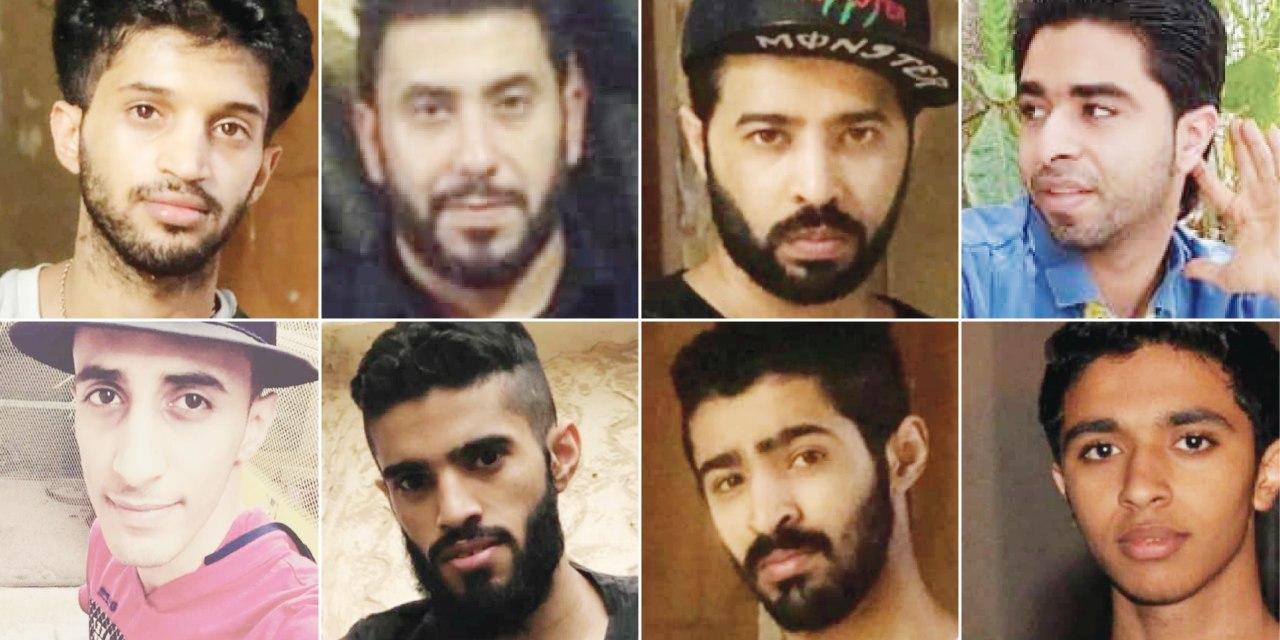
The eleventh of May 2020 marks one year since the Presidency of State Security in the Kingdom of Saudi Arabia carried out a violent, seven-hour raid that killed eight citizens and caused extensive property damage in the village of Sanabes, located on Tarut Islandoff the east coast of the country.
Local sources noted that Saudi forces surrounded the village before carrying out the raid with live ammunition on a residential buildingcontaining numerous apartments whose residents heard explosions and live fire for several hours. According to picturescoming from the scene of the raid, the forces usedweapons such as armored vehicles, machine guns, Al-Shibl 2 combat utility vehiclesequipped with basic weapons and shells, incendiary and explosive bombs, and snipers.
Security forces ordered the evacuation of residents ofhomes neighboring thesite of the assault for a short time without providing alternative housing. They then proceeded to completely demolish two adjacent homes as well as the targeted house. Local sources believe that the destruction and burningof the targeted house, and those inside it, prompted the security forces to demolish the two neighboring houses to hide the extent of the violence and eradicate all traces of the operation.
The major damage and burning of the victims’ bodies complicated the process of identifying them. DNA samples were taken from the families to confirm the identity of the bodies. To this day, the relevant authorities have not officially announced the names of the victims, notified their relatives, or handed over the bodies to the families. However, information indicates that the victims, who were all from the town of Al-Awamiyah, include Ahmed Tariq al-Faraj, Mohammed Abdullah al-Nimr, Aqeel Nabil Al Gohar, Hadi Tariq al-Faraj, Mohammed Saud Abu Kabbous, Fahd Abdullah Al Rabah, Hassan Abdullah al-Nimr, and Ali Abdullah al-Nimr.
Meanwhile, the Presidency of State Security issued a statement saying that the operation targeted a terrorist cell, explaining that “the relevant entities observed signs leading to the discovery of the presence of a newly-formed terrorist cell planning to carry out terrorist operations against vital installations and security sites.”By turn, information has confirmed that the security forces did not seek to determine the identity of those present in the home and used force immediately upon their arrival at the scene. Furthermore, none of the victims were on the wanted list previously issued by the Saudi Ministry of Interior in connection with the demonstrations that began in 2011.
ESOHR believes that the victims’ presence in the village of Sanabes may have resulted from their fear of arrest and subjection to various forms of abuse because some of them had participated in the demand movement. According to ESOHR’s information, some people declared wanted, along with some who complain of being on anundeclared wanted list, resort to hiding outfor fear of brutal torture if they are arrested and because of lack of confidence in a judiciary that has issued many arbitrary rulings, including the death penalty, against peaceful persons.
Saudi Arabia was not content with the raid. Violations continued, and the armed forces keptthe village’s targeted Sawari neighborhoodcordoned off for 15 days after the raid, finallywithdrawing on 26 May 2019. They also launched a campaign of arrests againstsix young men.
A full year after the crime, despite documentation of the violence and casualties involved, the Saudi government has not opened any investigation toassign blame for the bloodshed and other violations or to uncover the details of the deadly raid. Moreover, the government continues to refuse to hand over the bodies of the eight victims, insisting on perpetrating psychological torture against the families. This incident echoes the approach used against at least 86 victims whose bodies are being held or are missing, according to ESOHR monitoring.
In addition, no changes in the Saudi government’s policies has occurred, while arbitrary, extrajudicial killingand forced displacement operations continue.For example, Saudi security forces recently killed a citizen, Abdul Rahim al-Huwaiti, in the town of Khuraibat in northwest Saudi Arabia, during a forced displacementoperation against the indigenouspopulation.
ESOHR stresses that the Saudi government’s killings of citizens are extrajudicialoperations that disregard all international laws prohibiting the use of violence except in extreme circumstances. In this operation and in similar incidents, there is a lack of serious attempts to avoid killing people and to capture them peacefully, especially since most of them are not on the wanted list. ESOHR notes that this operation is one of a series of government operations launched in various parts of the country, including several raids previously observed by ESOHRin the Qatif area.
Furthermore, ESOHR states that the Presidency of State Security’s allegations that the victims belonged to a “terror cell” or were on the wanted list come within the context of its use of counterterrorism as a pretext to escalate against and intimidate citizens. Thus, the official statement did not specify the victims’ supposed plans or how the government identified the alleged terrorists. These accusationsresemble those used previously against activists and dissidents.
ESOHR places the killing of citizens in the escalating framework pursued by the Saudi government and considers it an attempt to intimidate citizens through violence. We believe that these issues form connected files whose details must be documented. Any violations found must be overseen by supreme authorities in Saudi Arabia, working legally and earnestly to ensure the opportunity to conduct independent investigationssupervised by agencies, possibly international, and resulting in the accountability of all those actively responsible.
